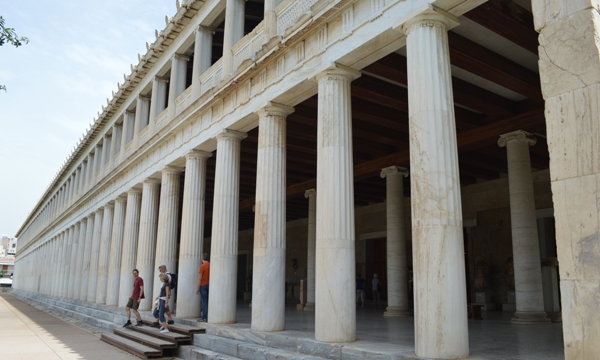I love watching programmes on TV about Ancient Greece. The reconstructions of Minoan houses, the dramatisations of life in the Agora of Athens and the stories of the great philosophers have always intrigued me. Even armed with all the enthusiasm that my curiosity sparked, I still find that there’s a limit to how much of the ancient sites I can absorb, as I discovered on my recent trip to Athens and the Cyclades islands. Not only is there so much to see but the heat, the crowds and the sheer intensity of experiences means that even the most keen visitor will need to plan sensibly in order to make the most of their time exploring the ancient Greek world.
So what’s the most sensible approach to visiting archaeological sites without getting hopelessly overloaded with names, dates and ruins? Here are a few tips for the mildly-curious visitor which might help experience the best of ancient Greece while remaining sane.
1. Build in plenty of rest time into your schedule. While it might be tempting to try and fit in as much as possible into each day, this is a guaranteed way for culture fatigue to quickly set in – and even before that’s happened the different sites you’ve rushed around will have merged into an indistinguishable mess of ruins and dates. Plan no more than one historic site a day – maybe two if you’re in Athens, but even in the capital you can make the most of the fact that your entry ticket for the Acropolis allows you access to six other historic sites on different days.
2. Take your time to enjoy each site in peace. On a similar note to the previous point, don’t rush with the herd around the most popular places. Bear in mind that the large groups often only have 40 minutes to visit a major attraction. Let them pass in front and you can enjoy each place in relative solitude. And if you visit early or late in the day, you can miss the large groups altogether.
3. Consider hiring a guide. A good guide can really bring to life something that might look like little more than a few columns and some rubble. A private guide for 2 people can be expensive but if you can team up with a small group of fellow visitors then you can have the best of both worlds: a small group tour at a good price. Audio-guides are available at many sites and the quality varies enormously – a good audio-guide shares plenty of interesting detail in an entertaining way that doesn’t bore or overwhelm the visitor.
Finally, don’t feel obliged to absorb every story, every name and every fact. If you like taking it easy at a site, simply read the information boards (they’re usually quite sparse) and then find a good place to sit and enjoy your surroundings. At the Agora in Athens I enjoyed just resting for a few minutes away from the crowds and trying to imagine how the place would this have looked 2000 years ago: What would people be wearing? Would they be rushing around too? What would they have been talking about? I might not have left with all the information that a guide would have provided, but I did leave having spent a very enjoyable hour at the Agora.





